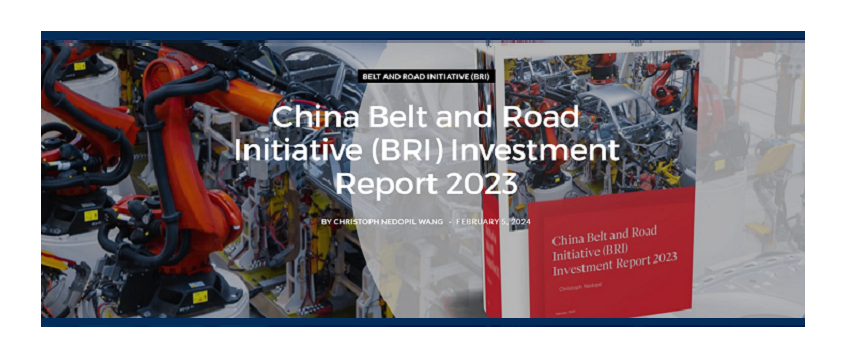
On 5 February, 2024, the Green Finance & Development Center (GFDC) at Fudan University, China, in assocuation with the Asia Institute at Griffith University, Australia, released a report titled China Belt and Road Initiative (BRI) Investment Report 2023. In November 2023, the Ministry of Commerce (MOFCOM) released new BRI engagement statistics covering the period of January to October 2023.
Cumulative BRI engagement in the full 10 years since the announcement of the BRI in 2013 breached the USD 1 trillion mark to reach USD 1.053 trillion, about USD 634 in construction contracts, and USD 419 in non-financial investments.
Preliminary data on Chinese engagement through financial investments and contractual cooperation for 2023 in the 149 countries of the Belt and Road Initiative show about 212 deals worth USD 92.4 billion. This compares to USD 74.5 billion BRI engagement in all of 2022 – an increase of 18%.
Key findings of the report:
- 10 years after the announcement of the BRI, cumulative BRI engagement breached the USD 1
trillion mark (USD 1.053 trillion), with about USD 634 in construction contracts, and USD 419 in
non-financial investments; - China’s energy related engagement in 2023 were the greenest in absolute and relative terms in
any period since the BRI’s inception reaching USD 7.9 billion; - China is increasingly investing in electricity transmission (over USD 7 billion);
- BRI finance and investments has picked up in 2023 with about 212 deals worth USD 92.4 billion
compared to about USD 74.5 billion in 2022; - Investments as a share of BRI engagement reached record levels at over 52 percent, indicating
higher ownership and risk taking of Chinese enterprises; - In 2023, particularly the technology (+1046 percent)1 and metals and mining (+158 percent) grew.
- Chinese companies strongly invest in metals and mining, which are particularly relevant to the
green transition (e.g., lithium) and batteries for electric vehicles. - Engagement related to batteries reached about USD 8 billion;
- Africa became the largest recipient of Chinese engagement, overtaking Middle Eastern countries;
- 19 countries saw a 100 percent drop in BRI engagement, including Turkey, and Kenya; Russia
saw one deal in 2023, after no engagements in 2022; - BRI investments in 2023 continue to be dominated by private sector enterprises, including
Huayao Cobalt and CATL, while construction contracts were dominated by state-owned
enterprises (SOEs); - In global comparison, Chinese overseas engagement grew, while global FDI into emerging
economies in 2023 dropped significantly; - For 2024, the report sees further growth of Chinese BRI engagement with a strong focus on BRI
country partnerships in renewable energy, mining and related technologies; - Potential future engagements can be expected in six project types: manufacturing in new
technologies (e.g., batteries), renewable energy, trade-enabling infrastructure (including pipelines,
roads), ICT (e.g., data centers), resource-backed deals (e.g., mining, oil, gas), high visibility or
strategic projects (e.g., railway).
The full report is available at this link: https://greenfdc.org/wp-content/uploads/2024/02/Nedopil-2024_China-BRI-Investment-Report-2023.pdf